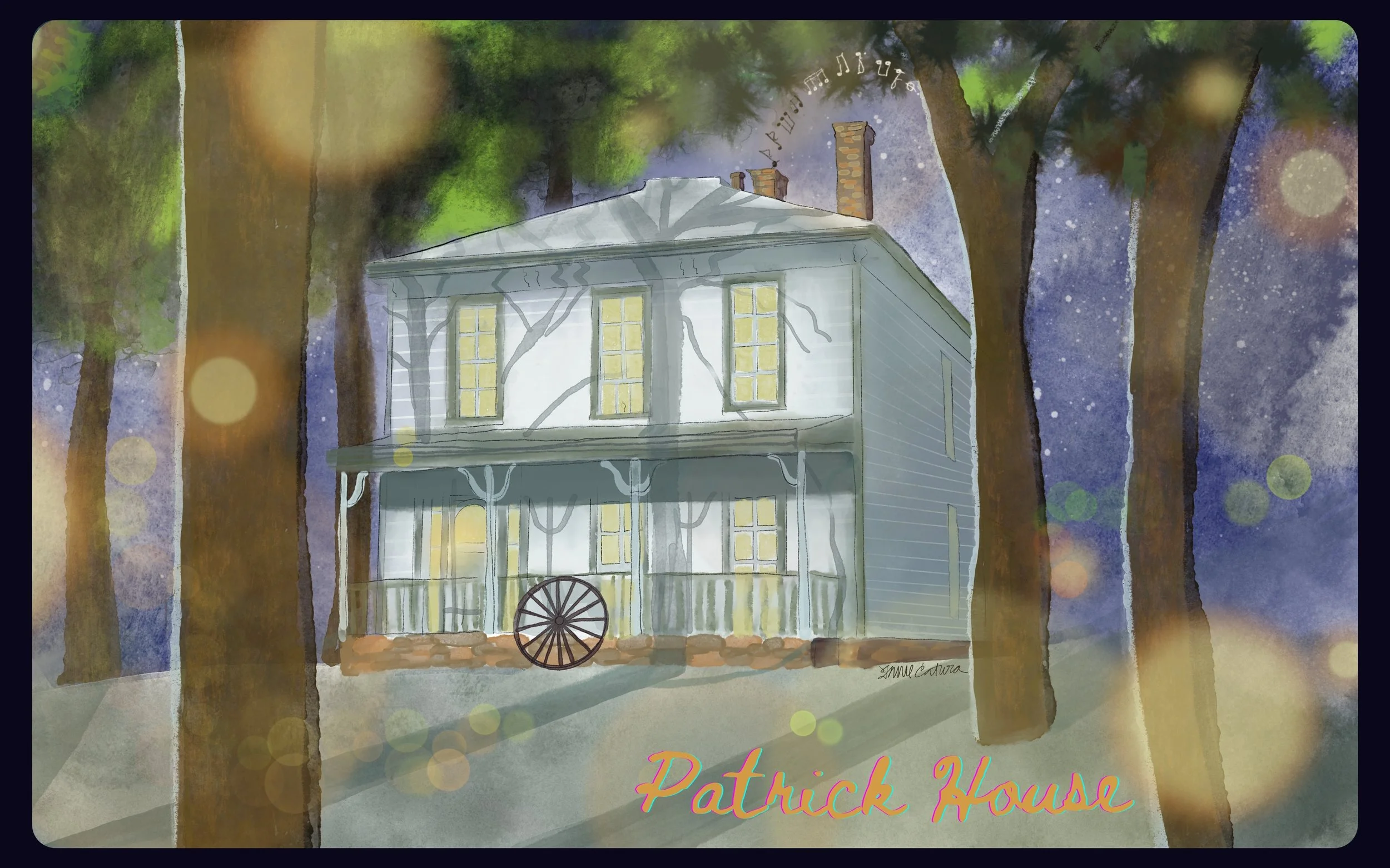A Haunted Stage Stop: The Patrick House’s Eerie Legacy
Something about the Patrick House catches my eye every time I pass it. Nestled against the forest and very different from modern homes, it feels like a piece of another world. Its white-washed wood and old-fashioned design stand in stark contrast to the sleek lines of the buildings around it, almost as though it was pulled from another time entirely. It’s the kind of house that invites questions, fragments of stories hovering just out of reach.
Why does it stand here, in this place that seems so distant from the frontier days in which it was built? What lives unfolded within its walls and what echoes have remained behind? The more I look at the Patrick House, the more I find myself drawn into its mysteries. There’s something about this time of year when stories from the past feel closer, their fragments floating up like the faint memories of lives long gone.
The Patrick family traveled from Missouri in 1860, settling in the Jefferson Territory a year before Colorado officially became a state. They built a two-story house that would later become the oldest building in the Denver Mountain Parks system, still in use today to care for the bison herd. Located in Genesee Mountain Park, the house can still be seen on the south side of the interstate near the bison herd. The house stood among the few homes spread across the area near Mount Vernon Creek. Life on the frontier was filled with hard work and simple comforts—neighbors harvested timber, grew potatoes and vegetables and built the one-room Rockland School in 1873. It took two days for families to travel to Golden and back by horse-drawn wagon to gather supplies. The Patrick family, like others, likely spent long hours tending to daily chores, drawing water, sewing clothes by hand and perhaps finding comfort in music—whether from a fiddle, singing voices or the rhythmic sounds of their own work. The music might have been a shared experience in quiet moments, bringing the family together after long days of labor. Though much of their daily life remains a mystery, the details we know paint a vivid picture of a family carving out a life on the frontier, both ordinary and unknown.
Yet, for all the ordinary routines of frontier life, tragedy struck the Patrick family in a way that still lingers in the house’s history. It is said that the first recorded murder in Jefferson County took place right outside the home. In a heated argument, one Patrick brother killed the other—reportedly over a disagreement about a dog. The brother who was killed had been a fiddle player and locals have long whispered of an eerie fiddle music heard in the house, a haunting reminder of the tragic event. Like so many stories from the past, the exact details have faded, leaving behind fragments—pieces of a tale passed down through generations, blurred by time. What we do know is that this act of violence has forever marked the Patrick House, blending the ordinary lives lived there with the darker, more mysterious elements of its history.
The stories of the Patrick House don’t end with the murder. Over the years, tales of strange occurrences have surfaced—floating lights spotted near the house, dogs barking at nothing, as well as that eerie sound of a fiddle playing in the distance. Some dismiss these as figments of the imagination, but for others, they are signs that the house is haunted by its past. Perhaps it’s the memory of that tragic night that echoes through the halls or maybe it’s something older, something more unknowable. Like the house itself, these stories have been passed down in fragments, blurring the line between reality and legend.
The haunting isn’t just in the ghost stories, but also in how much we’ll never know. The lives lived here have become pieces of a larger, unfinished story that continues to capture our imaginations, especially as the days grow shorter and shadows stretch longer. The Patrick House, with its rich history and dark tales, stands as a reminder of the mysteries of the past that linger, even when the complete story may be lost to time. Written and researched by Annie Catura
References for this article include: Lomond, Carole A. Jefferson County,
Colorado: A Unique and Eventful History. Views Publishing Company of
Colorado, 2009, pp. 145, 175. “Genesee Park.” History Colorado. Colorado
DAR. “John Patrick House Plaque.” Peace Pipe Chapter, NSDAR.



